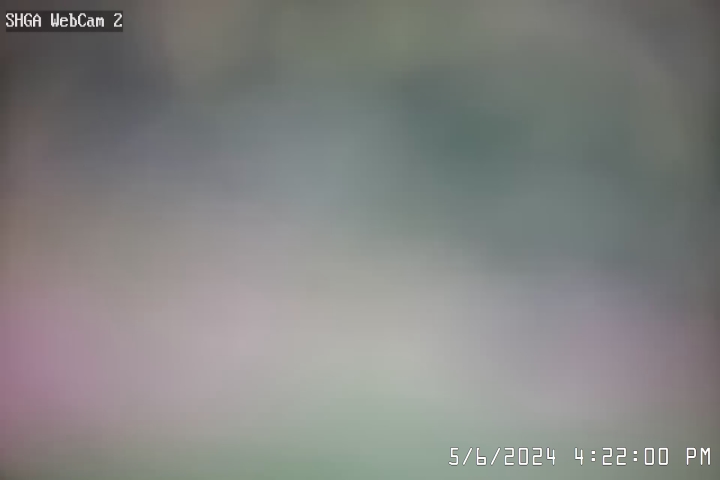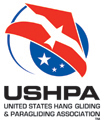'
'
 |
 |
|
 |
 |
||
 |
||
 |
||
 |

 |
|
| Revised March 26, 2020 |
Kagel Mountain — Site Dangers *WARNING* THERE ARE DANGERS NOT LISTED BELOW — CONDITIONS CHANGE DAY TO DAY. EVERY PILOT IS RESPONSIBLE FOR HIS OR HER OWN SAFETY.
Launches Kagel Main Launch The Kagel Main launch is on the left (east) side of the launch area, at the top of the ridge, facing south. It is a H3 Launch, PG launch is not recommended. Elevation and glide: 3537 feet MSL, 4.1:1 glide ratio to LZ. Ideal wind direction: SE to SW, 150 to 220 degrees. Launchable wind direction: SE to SW, 120 to 240 degrees. Wind velocity: Ideal is 8 MPH. Suggested max 20 MPH, Gust factor 5 MPH. Kagel Saddle Launch (PG Main Launch) The Kagel Saddle launch is on the right (west) side of the launch area, in the saddle below main launch. It is a H4 Launch, and is the main PG launch area, a P3 launch. For hang glider pilots, the saddle launch is deceptive, due to the very low ground clearance for both wingtips and shallow slope. Please exercise care when using it, and keep wings level through the launch run. Do not launch the saddle when the wind is cross, due to rotor off of the main launch or the ridge to the right. Elevation and glide: 3530 feet MSL, 4.1:1 glide ratio to LZ. Ideal wind direction: Due S, 180 degrees. Launchable wind direction: SE to SW, 170 to 190 degrees. Wind velocity: Ideal is 10 MPH. Suggested max 20 MPH (15 MPH for PG), Gust factor 5 MPH. Kagel North Launch (Back side launch) While not used frequently, it is possible to launch the back side in north winds. It is a H4 and P4 Launch. There are NO good LZs on the back side, so one must make it over or around the main ridge to the primary LZ. Experience has shown that if there is any significant westerly component to the wind, there is potentially dangerous turbulence and tremendous sink in front of launch and through the pass over the Pacoima reservoir. Be aware that with a north wind, when crossing the ridge to go to the LZ, rotor off the main ridge is very common. Elevation and glide: 3530 feet MSL, 4.8:1 glide ratio to LZ by the time one goes around the ridge. Ideal wind direction: N, 350 to 10 degrees. Launchable wind direction: N, 350 to 30 degrees. Wind velocity: Ideal is 5 MPH. Suggested max 10 MPH, Gust factor 5 MPH. Towers Launch (Contractor's Point) On the west side of the Pacoima Reservoir is Contractor's Point, known locally as Towers. This H4 launch is primarily used when access to Kagel Mountain is restricted. The launch is so steep that it is essentially a cliff, and while it faces ESE, a south wind will wrap around enough to be launchable. A westerly component to the wind makes this site unlaunchable, and that can be difficult to detect when standing on launch, and so one must check the wind direction from a more exposed location. Elevation and glide: 3640 feet MSL, 4.0:1 glide ratio to LZ. Ideal wind direction: SE, 135 degrees. Launchable wind direction: E to S, 90 to 180 degrees. Wind velocity: Ideal is 8 MPH. Suggested max 15 MPH, Gust factor 5 MPH. Alternate and Emergency LZs For many reasons, landing at any one of these LZs is more dangerous than returning home at a comfortable altitude to the SHGA flight park. In addition to being unfamiliar, most are relatively small, surrounded by obstacles, and require cross-wind landings. For those who choose a flying style that involves a perceptible risk of landing out, it is valuable to walk these LZs and understand their complexities from the ground. Open land near Sylmar is in high demand and and is likely to be put to use, so it is best to visit these areas regularly. In short: stupid hurts. These LZs are not maintained by the club and should only be considered for emergency use. They are listed below from west to east. Suggestions and updates are welcome(). Olive View Hospital (closed) — 34°19.55N x 118°26.52W x 1440 ft A field just east of Olive View Hospital, irregularly covered with bushes, and with concrete debris in the eastern half. The hospital's parking lot on the west side of the field has been expanded in recent years and is filled with lamp posts. A road has also been built through the middle of the field and is lined with boulders. While this has traditionally been a popular emergency LZ, there is little to recommend it today. Landing here is discouraged since the landowner has objected to hang gliders in the past. Almetz Street (closed) — 34°19.69N x 118°25.96W x 1580 ft This is an east-west strip of dirt used for flood control and construction staging. There are wires on both sides, and one must land to the east given the slope of the terrain. Currently it is most common to land near the east end. It is also possible to land on several of the higher terraces, though the hike out is long. The terrain is extremely irregular, so walk this area carefully before using it. Retrieval is on Almetz Street, at the intersection with Leedy Ave. Base of the dam (closed) — 34°19.66N x 118°24.16W x 1460 ft Large dirt area in the Pacoima wash, between the Forest Service residences near the dam and the Gavina Street bridge. A large dirt hill was built on the north half of this area in 2005, but there is a narrow flat area west of this new hill, and the south area is still clear. Watch for powerlines on the north and east sides. A left-hand approach puts one close to the mountainside on the west, and a right-hand approach is over power lines. Either can be used, and the best choice depends on conditions and pilot preference. If necessary, one can also land on the Gavina Avenue bridge if traffic permits, uphill to the east, or in the brush on the north side of the road. Glen Haven Cemetery (closed) — 34°18.90N x 118°22.39W x 2050 ft The general location is the subdivision east of Trash, just north of the Glen Haven Memorial park on Kagel Canyon Road. The familiar large empty lot is NO LONGER AVAILABLE, for several new fences were installed in April of 2018. There are other fields in the area, none as good, and a consensus has not yet emerged on the next best. Landing somewhere near here is appealing if returning low from "Lance's Ridge", properly called Limekiln Peak, but one must not return so low as to interfere with the rifle ranges. Beehives (closed) — 34°18.49N x 118°20.93W x 1580 ft This small dirt clearing often has beehive boxes in it. Because the terrain slopes steeply upwards to the northwest, one must land uphill, typically down-wind. It is subject to rotor from the hills just south of it, but this LZ is fairly forgiving if one lands long or short. Retrieve is via a dirt road on the west side of Little Tujunga Road, opposite the entrance to Padilla Ranch. Dino's Plateau (closed) — 34°18.01N x 118°20.63W x 1560 ft This is a modest-sized field perched above the Little Tujunga Wash on the east side. It is usually covered with tall grass, sometimes with beehives along the north side, and possibly with cattle. There are big scary powerlines just west of the field, even with the field's ground level. Because the field slopes up to the northeast, the suggested landing direction is uphill to the east, typically cross-wind. Retrieve is on Little Tujunga Road, after a somewhat difficult hike out. Big Tujunga Wash (closed) — 34°16.91N x 118°17.75W x 1400 ft or 34°16.57N x 118°18.64W x 1330 ft The Big Tujunga wash area is huge, but much of it is rough. The most commonly used area is across the street from the baseball diamonds, on a long narrow runway marked by a large isolated tree at each end. Wind direction is usually up the wash. The alternate location, where Oro Vista Ave diverges from Big Tujunga Canyon Road and crosses the wash, has recently attracted some advocates. Retrieve is via Oro Vista Ave. in Sunland. Deukmejian Park (closed) — 34°14.89N x 118°15.33W x 2220 ft The Dunsmore Sediment Placement Site (SPS) is adjacent to Deukmejian Park at the foot of Mount Lukens in La Crescenta. The top of the man-made mountain of sediment is a tempting LZ for those with impeccable spot landing skills, but over-shooting in any direction spells disaster. The ravine just west of it is only slightly more forgiving, and landing must be to the northeast, uphill and downwind. Retrieve is via the Deukmejian park entrance road, after a little cleverness to escape from the surrounding chain-link fence. La Canada Flintridge Golf Course (closed) — 34°13.00N x 118°11.35W x 1760 ft At the intersection of the Angeles Crest Highway and Starlight Crest Drive (the entrance road to the golf course) is a fairway that runs uphill to the southwest. Other fairways may work better for higher performance gliders. One is duty-bound, of course, to buy drinks for any golfers whose games are interrupted! JPL (closed) — 34°11.98N x 118°09.98W x 1100 ft The old East Parking Lot at the Jet Propulsion Laboratory was removed in 2016, and is now a large flat dirt field. There is a dirt path across the middle, lined with bushes, and one MUST land south of this. There is a set of power lines high above the path, and a web of wires over the north half of the lot. One can also land somewhere in the Arroyo Seco instead, but there are many nearly invisible power lines in the area. Eaton Canyon (closed) — 34°10.28N x 118°05.65W x 890 ft The Eaton Canyon debris basin, just south of New York Drive in Pasadena, is huge, open, and reasonably level. There are large power lines on the east side, but they are quite visible from the air. Retrieve is on New York Drive, from the Sierra Madre exit of the 210 freeway. ^ top |
 |
||
FLIGHT PARK INFO | WEATHER | NEWS & EVENTS | PILOT FORUM | CONTACT | MEMBER LOGIN Copyright Sylmar Hang Gliding Association, Inc. TERMS OF USE. Site donated by: Sonic Media |
||











